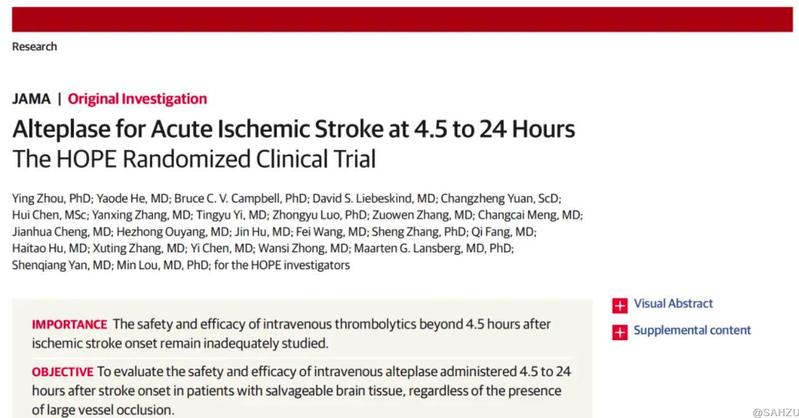Researchers Reveal the Secrete of Nonrandom DNA Seg-regation in Human Cells
SAHZU Neurologist Prof. LOU Min and her team recently found that, despite an increased risk of symptomatic intracranial hemorrhage, intravenous alteplase provided functional benefit to acute ischemic stroke patients who had salvageable brain tissue but did not undergo initial thrombectomy, when administered 4.5 to 24 hours after stroke onset.
Their research finding titled Alteplase for Acute Ischemic Stroke at 4.5 to 24 Hours was published on the Journal of the American Medical Association (JAMA), on August 7, with Prof. LOU as the sole corresponding author. Co-first authors include SAHZU's Dr. ZHOU Ying and Dr. HE Yaode, along with Dr. Bruce C. V. Campbell from the Royal Melbourne Hospital.

This trial enrolled a total of 372 patients with acute ischemic stroke and salvageable brain tissue at 26 stroke centers across China. Patients were then randomly assigned to receive intravenous alteplase or standard medical treatment.
Researchers found that, at 90 days, 40% of the patients receiving alteplase and 26% of patients with standard care achieved functional independence. The incidence of symptomatic intracranial hemorrhage was higher with the alteplase group, but the mortality rate was the same in both groups.
The study presents the world's first randomized controlled clinical trial looking at the efficacy of intravenous alteplase thrombolysis in acute ischemic stroke patients without planned thrombectomy within an extended time window of 4.5 to 24 hours. It revealed that, under imaging guidance, intravenous thrombolysis can significantly improve functional outcomes in patients even beyond the traditional 4.5-hour treatment window. The research provides compelling evidence for relaxing treatment criteria and presents the potential to change the current clinical guideline of stroke treatment, thereby benefiting a greater number of stroke patients.

